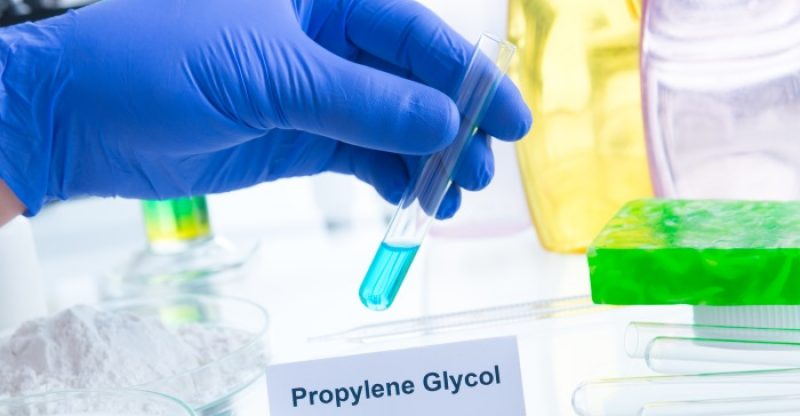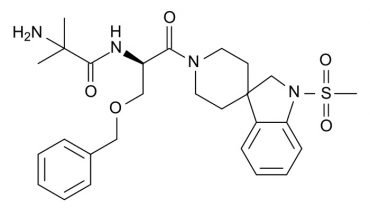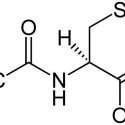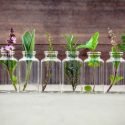10 Harmful Chemicals in Beauty Products and Why You Should Avoid Them
Avon, L’Oreal, Neutrogena, Nivea, Palmolive, Dove, Pantene, Olay, Maybelline – these are just several of our favorite brands.
We love their body washes, shower gels, lotions, creams, and shampoos.
They smell nice. They leave our skin clean and soft in touch.
They make us feel refreshed. Now, here’s a tough question:
Are those products safe to use?
The Power Of Cosmetic Advertising
Every day we’re bombarded with hundreds of advertisements of beauty products from various companies.
They use television, online videos and images as well as photos in magazines to persuade us that their product will make us look younger and improve the condition of our skin, hair or nails.
Even products’ bottles and jars are full of phrases that are created to persuade us to make the purchase.
Would you resist buying that nourishing lavender shower gel or moisturizing shampoo for dry scalp?
Especially if it says that it’s made of “natural ingredients”?
Probably not, right?
We’ve been brainwashed so much throughout years that we no longer question what it says on the package of a product.
We trust that it’s all true and good for us. After all, celebrities use it.
Since it’s good for them, why shouldn’t it be good for you?
All that you see on television and read in magazines is a part of cosmetic advertising made for one purpose: to make you buy a product.
Thus, it’s hard to tell if a beauty product contains harmful substances or not.
Nobody would inform you about it because it’s counterproductive.
However, there is a way to figure out whether a beauty product you use is non-toxic and safe.
Tell me, how often do you read the ingredients section?
Harmful Ingredients: an Eye-Opening Guide
Majority of us never look at the ingredients section of a beauty product we’re about to purchase.
Why? Well, mostly because we don’t understand what it’s written there.
And, since we don’t understand it, we ignore it.
Hardly any of us makes an effort to check each and every substance online.
Did you? I guess not, right?
Don’t worry, though. I did the whole research myself so that you didn’t have to.
In this article, you’ll learn about 10 harmful chemicals that can be found in many beauty products.
I’ll also explain to you why you should avoid using products that contain them.
A Short Glossary of Chemistry and Medical Terms
- Synthetic detergent – a synthetic substance, other than soap, which is an effective cleanser.
- Genotoxicity – a destructive effect on DNA affecting its integrity. It can cause mutations that may lead to cancer.
- Carcinogen – a substance that can cause cancer.
- Emollient – a substance that helps soothe, soften and boost moisture levels of the skin.
- Erythema – redness of the skin. It can occur with inflammation.
- Edema – swelling caused by excess fluid trapped in the tissues of your body.
- Preservative – a chemical added to a product to prevent the growth of microorganisms.
- Antimicrobial – destroying or preventing the growth of microorganisms.
- Bacteriostatic – an agent that stops bacteria from reproducing (it doesn’t necessarily kill them).
- Endocrine disruptor – a chemical that can interfere with endocrine systems and so, cause cancerous tumors, birth defects, and other developmental disorders.
- Estrogen – a female steroid hormone that helps control and guide sexual development.
- Antistatic agent – a compound used for the treatment of materials to reduce or eliminate the buildup of static electricity.
- Necrosis – cell injury that results in premature death of cells in living tissues.
- Contact dermatitis – a red and itchy rash.
- Antioxidant – a substance thought to protect body cells from the damaging effects of oxidation.
Now, let’s decipher those longish chemicals listed in ingredients sections of most beauty products, shall we?
Sodium Laureth Sulfate (SLS or SLES)
Sodium Laureth Sulfate (also sodium lauryl sulfate) is an inexpensive chemical substance that foams easily and makes an excellent detergent.
Thus, it’s extensively used in the household as well as industrial cleaners.
In fact, Household Products Database lists sodium laureth sulfate as a chemical ingredient in over 700 products.
Since sodium laureth sulfate is a perfect cleansing agent, it’s also used in most personal care products.
You can see it listed as the first ingredient after water in most body washes, shampoos, and shower gels.
Although deemed to be safe (there’s no scientific evidence that it may cause cancer), sodium laureth sulfate can have two adverse effects on our skin and hair:
- Dry scalp and harsh, rough, dull with frizz and prone to tangling hair (1).
- Skin, scalp and gums irritation (2).
Thus, if you use a body wash with sodium laureth sulfate daily, you not only strip your skin of its natural oils but also, may seriously irritate it.
The same goes for hair products, such as shampoos and conditioners.
If you want to have healthy hair and/or try to grow your hair, you should invest in non-sulfate hair products.
Remember, sulfate products will damage your hair and dry your scalp, which can result in hair loss and dandruff (3, 4).
Now, if you’re attentive, you can also notice that sometimes cosmetics don’t contain sodium laureth sulfate, but sodium coco sulfate.
Is it the same chemical substance? Unfortunately, yes.
Since sodium laureth sulfate has a bad reputation, many companies hide it under a different name: sodium coco sulfate.
They explain that this type of sulfate is derived from coconut or palm oil, which makes it natural and safe.
What they fail to mention is that sodium laureth sulfate is its predominant component.
Both sodium laureth sulfate and sodium coco sulfate are synthetic detergents, which shouldn’t be a part of any natural product.
Polyethylene glycol (PEG)
Polyethylene glycol is a chemical substance that keeps products stable and acts like glycerin.
It’s also a moisturizing agent that helps deliver other substances deeper into the skin.
Now, you can notice that PEGs tend to be followed by a number (eg. PEG-4).
The number correlates to how many units of ethylene glycol a PEG comprises.
The lower the number, the easier the substance is absorbed by the skin.
PEG compounds can be dangerous because they show evidence of genotoxicity.
If they’re used on broken skin, they can cause irritation as well as systemic toxicity.
Thus, products that contain PEG aren’t safe to use on damaged skin.
What’s more, PEGs can be contaminated with considerable amounts of ethylene oxide and 1,4-dioxane, which are human carcinogens that can harm the nervous system and interfere with human development.
Since 1,4-dioxane doesn’t easily degrade, it can remain on your skin long after you rinse it down with the shower drain.
Why should you be concerned about it?
Well, as I’ve already mentioned, PEG functions as a penetration enhancer.
Thus, it increases the permeability of the skin in order to allow greater absorption of any other product, including harmful ingredients.
To put it simply:
- If your shower gel contains PEG and other undesirable ingredients, PEG will make it easier for them to penetrate your skin and get into the bloodstream.
- Since PEGs can be contaminated with other harmful substances, those substances can also enter your bloodstream, which can result in systemic toxicity.
The question is, is there a way to figure out whether PEG in your beauty product was contaminated?
Unfortunately, no.
Cocamide DEA
Cocamide DEA is a surface active agent, which is used as emollient, thickener, dispersion aid as well as a foam stabilizer in such beauty products as shampoos, hair dyes, bath products and lotions (5).
According to research, DEA is an ingredient in 584 cosmetic formulations.
When evaluated for skin toxicity, DEA caused moderate erythema, wrinkling, cracking, irritation and dry skin in animals.
It didn’t perform any better in humans.
One hundred and four women took part in a study to determine the safety and efficacy of a shampoo containing 2% Cocamide DEA.
They were instructed to shampoo daily with the given product for 87 days.
Ten days after the final use of the shampoo, all women were inspected.
They had mild or intense erythema, erythema, and edema as well as moderate to adverse skin irritation.
Despite the results, Cocamide DEA is said to be safe to use in rinse-off products and at concentrations up to 10% in leave-on cosmetics (6).
Apart from causing moderate to adverse skin irritation, scientists proved that Cocamide DEA can react with other ingredients in cosmetic products and create nitrosamines.
Now, nitrosamines are powerful cancer-causing substances (7).
In a 1998 study, researchers from NTP found a connection between regular exposure to Cocamide DEA and cancer in animals.
Although there’s no certainty that the same effect can occur in humans, there’s a possibility (8, 9).
Another concerning study was done at the University of North Carolina in 2006.
Researchers reported that Cocamide DEA irreversibly damaged the memory capacity of animals, which were exposed to it before birth (10).
They believe that Cocamide DEA can have a similar effect on humans, though, again, there’s no certainty.
Steven Zeisel, the author of the study, suggests pregnant women look at the labels of their beauty products and if possible, find those that don’t contain DEA.
Triclosan
Triclosan is a preservative as well as an antimicrobial and bacteriostatic agent that can be found in such beauty products as aftershave lotions, bath washes, deodorants, body sprays, skin care products, kinds of toothpaste, shampoos and makeup products.
There is evidence that triclosan is an endocrine disruptor and can impact thyroid function as well as thyroid homeostasis.
A study from 2009 proves that triclosan decreases thyroid hormone concentrations.
Now, the thyroid produces hormones that influence your whole body.
Thus, if the levels of your thyroid hormones aren’t normal, you can have health problems (11).
What’s even more concerning, triclosan has already shown up in blood, urine as well as breast milk of people around the world.
That means we’re all being exposed to it daily.
Studies have also shown that triclosan, when exposed to sunlight or when interacting with chlorine in tap water, degrades into the toxic breakdown.
Although it shouldn’t be an ingredient in any cosmetic product, triclosan is still listed in a number of them.
It’s deemed to be a safe substance due to its antimicrobial activity.
However, in 2005, FDA found no evidence that an antimicrobial body wash that contains triclosan is superior to plain soap and water for protecting us from bacteria.
Thus, to be on the safe side, consider washing your body with plain soap and water or buying other triclosan-free products.
Parabens
Parabens are a group of chemicals added to such cosmetics and personal care products as lotions, sunscreens, antiperspirants, mouthwashes, makeup, and hair products because they increase shelf-life as well as the stability of a product, and prevent the growth of mold, bacteria, and yeasts.
Parabens can enter the human body through skin absorption, ingestion, and inhalation.
According to a report in the Journal of the American College of Toxicology from 1984, parabens were used in over 13,000 products.
As a result of such a huge exposure to parabens throughout years, recent studies show that 90% of people in the US have parabens in their bodies.
The highest concentrations of parabens were found in women, people in high-income households as well as in African Americans.
Should we be concerned about it? Unfortunately, yes.
Parabens are known endocrine disruptors, which can function as estrogen in the human body.
Also, according to studies, parabens can affect the mechanisms of female breast cells and influence their abnormal growth.
That, in turn, leads to a greater risk of breast cancer in women.
To make sure you don’t purchase cosmetics containing parabens, search for “paraben-free” information on the bottle.
If it doesn’t say anywhere whether the product you want to buy has parabens, look at the ingredients section.
Chemicals that are parabens will have a “-paraben” ending, such as these: propylparaben, butylparaben, ethylparaben, heptylparaben, and methylparaben.
Phthalates
Phthalates are chemicals used as additives and plasticizers in PVC.
They are also employed in the solvent, adhesive, wax, ink, pharmaceutical, cosmetic as well as insecticide production.
They are used in latex and paste paint and, often, nail polish.
There’s evidence that the exposure to phthalates can cause harmful health effects (12):
- Endocrine disruption. Research suggests that phthalates disrupt hormones, which, in turn, can have harmful effects on the critical periods of development. Pregnant women exposed to phthalates can give birth to boys with the shortened distance between the anus and genitals and altered hormone levels.
- Developmental and reproductive toxicity. Exposure to phthalates can have adverse effects on the development of a male reproductive system. The research found that both sperm quality and male infertility are connected to levels of phthalates in their bodies.
- Cancer. The National Toxicology Program as well as US Environmental Protection Agency report that phthalates such as DEHP can be human carcinogens. The conclusion is based on the fact that phthalates have been found to be carcinogenic in animals. However, human data on the issue are limited and still, inconclusive.
- Adverse effects on airways and immunologic system. A British epidemiologic study found a link between exposure to phthalates in the home environment and the development of allergy as well as asthma in children. Since phthalates are harmful to a human body, the European Union restricted the use of those chemicals in cosmetics and personal care products. They’re also considering expanding the restriction to more types of phthalates as well as their use in toys (13).
Unfortunately, in the US, the use of phthalates isn’t that restricted.
The results of FDA’s Survey Of Cosmetics for Phthalate Content from 2010 show that phthalates can be found in a number of beauty products, such as nail polish, skin cream and lotion, products containing fragrance, deodorants, hair products, body washes, nipple creams as well as many baby and children products (14).
What’s worse, sometimes the presence of phthalates may not be noted on labels.
However, various environmental organizations are trying to change it so that consumers could decide whether to buy a product containing phthalates or not (15).
To check whether a beauty product contains phthalates, look at the ingredients section and search for: phthalate, DBP, DEHP, DEP, DnBP or fragrance.
Quaternium-15
Quaternium-15 is an antimicrobial agent used in cosmetics as a preservative and antistatic agent.
It can be found in skin care lotions, makeup products, hair products, bath products, creams, and sprays.
In 1986, Cosmetic Ingredient Review Expert Panel found that Quaternium-15 is toxic for animals.
It caused erythema, edema, necrosis, lethargy, anorexia and rapid shallow breathing in rabbits.
However, in humans, Quaternium-15 caused nothing more than a mild irritation (16).
Thus, CIR Expert Panel reported Quaternium-15 safe to use as an ingredient in cosmetics in concentrations from 0.1% to 1.0%.
Recently, though, CIR Expert Panel noted that sensitization to Quaternium-15 has risen to almost 10% in patch-tested patients in North America.
There are two major concerns about using products containing Quaternium-15.
Quaternium-15 has adverse effects on the respiratory system.
Hairdressers are especially vulnerable to this chemical, for they can suffer severe health symptoms from using and breathing in hair sprays for a long period of time.
There are also numerous case reports of people developing contact dermatitis after using products that contain Quaternium-15.
According to FDA, in 1981, 1015 cosmetic products included Quaternium-15 as an ingredient.
Currently, according to VCRP data, that number has dropped to 487 cosmetic products that contain Quaternium-15 at concentrations up to 0.2%.
Even though nowadays there are fewer products that contain Quaternium-15, there is still a number of those that do and they can be harmful to your health.
Thus, make sure there are no traces of Quaternium-15 in your cosmetics.
Retinol, Retinyl Palmitate and Retinoic Acid
Retinol is a naturally occurring form of Vitamin A.
Retinyl palmitate as well as retinoic acid are two derivatives of retinol.
They can be found in anti-aging lotions and creams, moisturizers, sunscreens and foundation.
Retinol and its derivatives have a number of advantages, for example, in sunscreens, they act as antioxidants and so, help protect the skin from aging caused by sunlight.
Although natural Vitamin A has an important role in human reproduction and development as well as in maintaining good vision and healthy skin, retinol shouldn’t be used in high doses and its derivatives should be avoided in personal care products and cosmetics since they can cause adverse health effects.
Both retinoic acid as well as retinyl palmitate in combination with sunlight can increase the risk of skin cancer.
According to the report of the National Toxicology Program of the US National Institute of Health of 2012, retinol derivatives increased the number of tumors in mice.
Although there’s no evidence that retinol derivatives can cause cancer in humans, yet, there’s a possibility (17).
Now, should you stop using all sunscreens and other products containing retinol and its derivatives?
No, you shouldn’t.
However, remember about the adverse effect of retinoid acid and retinyl palmitate and so, don’t overuse your sunscreens.
Here, the more doesn’t mean the better.
Butylated Compounds: BHA and BHT
BHA (butylated hydroxyanisole) and BHT (butylated hydroxytoluene) are synthetic antioxidants.
They’re used as preservatives in such cosmetics as lipsticks, moisturizers as well as eyeshadows.
According to a 1998 report, BHT was used in 1709 formulations.
However, on the basis of both the animal and human data, the CIR Expert Panel concluded that BHT is safe as used in cosmetic formulations (18).
Unfortunately, there are a few concerns about using BHA and BHT in cosmetics.
Many have argued that both chemicals can cause endocrine disruption, organ system toxicity, developmental and reproductive toxicity, cancer and irritation.
There is little data, though, to say for sure that BHA and BHT can cause all of the above adverse effects.
Opinions are divided.
What’s true, however, is that BHA can cause cancer.
According to the 14th Edition of the Report on Carcinogens, BHA is “reasonably anticipated to be a human carcinogen based on sufficient evidence of carcinogenicity from studies in experimental animals (19).”
Since it causes both benign and malignant tumors in rats, mice as well as hamsters, its use in cosmetics should be restricted.
Unfortunately, it isn’t.
Fragrance
Fragrance is a chemical substance that can be misleading.
Many manufacturers list it on labels, but few of them name the exact ingredients that make up a “fragrance.”
According to FDA, a fragrance is a combination of chemicals that give a cosmetic or a personal care product a particular scent.
Often, manufacturers add fragrance to their products to mask other bad-smelling ingredients (20).
You can find fragrance in such cosmetics and personal care products as perfumes, colognes, aftershaves, shampoos, shower gels, creams and body lotions.
Now, according to The International Fragrance Association Transparency List, in 2015, 3,999 materials were reported as used in fragrance compounds.
Many of them are harmful to human health, such as:
- Acetaldehyde (a probable human carcinogen) (21),
- Benzophenone (shows evidence of carcinogenic activity) (22),
- BHA and BHT (check #9),
- Formaldehyde (a known human carcinogen) (23),
- Phthalates (check #6).
As you can see, there are thousands of toxic chemicals hidden under the name “fragrance.”
Although you cannot know, which chemical substance is in your cosmetic listed as “fragrance,” you can assume that it’s harmful to your health.
To be certain that your product doesn’t contain fragrance, search for fragrance, perfume or aroma on the label.
Checking Labels and Its Outcome
Let me guess.
After reading about the final harmful chemical, you ran to your bathroom shelf and started checking your shampoos, creams and makeup products.
Now you’re probably in panic, depressed, and worried.
I know. You found harmful ingredients discussed in this article either in all or most of your beauty products.
Don’t worry, though.
If you’re not a pharmacist, chemist or a doctor, you couldn’t have possibly known about the toxic chemicals that cosmetics and personal care products can contain.
It’s not your fault you used them.
On the other hand, now you’re equipped with knowledge and so, you can start making good choices when shopping for beauty products.
Throwing away all or most of your cosmetics can be hard.
You not only like them but also, they cost you a lot of money.
Moreover, if you get rid of all your shampoos, shower gels, and creams, what are you going to use?
After all, most products sold in supermarkets aren’t safe.
Is there any place you can buy natural, non-toxic, organic beauty products?
Yes, there is. All you need to do is to put a little effort into finding it.
Non-Toxic Beauty Products and Where to Buy Them: 4 Tips
If you want to buy a quality and natural product free of harmful chemicals, you need to search for it either online, in stores with organic products or in drugstores.
Check beauty products of such brands as, for example, Natura Siberica or Amala.
Their products might be a bit more hard to get (you might have to order them online) and more expensive, but they’re safe and won’t harm your body.
Also, to help you find natural and organic beauty products on your own, here are four useful things to remember:
- Search for products from “unknown” or “less known” companies,
- Look for logos on bottles and packages (i.e. certifications that a beauty product is made of natural and organic ingredients),
- Search for “(chemical)-free” on the bottle, such as SLS-free, paraben-free, PEG-free, etc.
- If a beauty product has a harmful chemical, but not listed as one of the first ingredients, but one of the last ingredients, it can be safe to use (the further on the list, the less of the substance a product has).
Now, even if you have non-toxic beauty products, don’t use them too often.
Remember, your skin produces natural oils that act as moisturizers, so don’t wash them off every day.
Help Us Spread The Word
If you found this article helpful, eye-opening and instructive, share it with your friends!
If you’d like to share your thoughts on the discussed issue or tell us about other harmful chemicals, you can do so in the comments below.
We’d love to know what you think!
FDA Compliance
The information on this website has not been evaluated by the Food & Drug Administration or any other medical body. We do not aim to diagnose, treat, cure or prevent any illness or disease. Information is shared for educational purposes only. You must consult your doctor before acting on any content on this website, especially if you are pregnant, nursing, taking medication, or have a medical condition.
HOW WOULD YOU RATE THIS ARTICLE?





